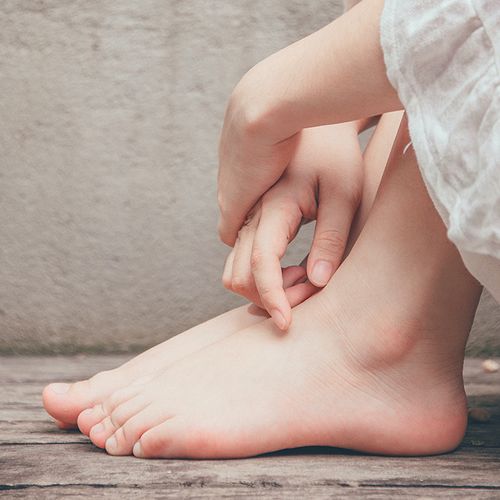If you've ever been booted out of bed because of your icy feet, recent research may help explain your plight.
Scientists have pinpointed specific proteins within the skin's blood vessels that play a part in the body's reaction to cold stimuli, whether it's exposure to chilly weather or touching a frigid surface with your bare hand.
The body's response to cold is to cut off circulation to the extremities to preserve blood flow to warm the internal organs. But for some people, this response is too strong, or it occurs mistakenly.
In Raynaud's disease, for instance, as the body responds to cold or stress, blood vessels narrow in the fingers and toes, which may feel numb and turn from white to blue to red during an attack.
A recent study explores the physiological mechanisms at work that makes the extremities numb with cold. The findings of this study and an accompanying editorial appear in a recent issue of the American Journal of Physiology Cell Physiology.
Study Details
The researchers used muscle cells from tiny blood vessels in skin-punch biopsies from healthy volunteers as well as muscle cells from an artery found in mouse tails with circulation similar to human skin.
"Our bodies are engineered by evolution to conserve heat and energy,” explained Martin Michel, MD, a professor at Johannes Gutenberg University in Germany, and the coauthor of the editorial. "One way of doing this is limiting blood flow to the skin by making blood vessels constrict, and norepinephrine (a hormone and neurotransmitter) does this via alpha-adrenergic receptors on muscle cells in the blood vessel wall. But we only want this to happen when it is cold."
For some people, he said, it appears that the healthy reaction goes awry.
"The mechanisms get active at 'normal' outer temperature," Dr. Michel said. "This could involve too many alpha-adrenergic receptors or that the (temperature set-point or something in the regulation mechanism goes wrong. Now we know for certain that two molecules called Epac and Rapl play an important role in the process."
The study identified new players that influence adrenergic receptor function in small blood vessels, said senior study author Maqsood Chotani, PhD, a principal investigator at the Research Institute at Nationwide Children's Hospital in Columbus, Ohio.
"The alpha-2 receptors had been identified many years ago, but the exact function of this alpha-2C subtype in blood vessels was very intriguing to me," Dr. Chotani said. "Early observations showed the alpha2C to be inside the cell and not on the cell surface like other receptors in the same family. The general belief [had been] that the receptor doesn't do anything in blood vessels—it was like a vestigial, or like a silent receptor.”
Not so, the study found.
"The alpha-2C receptor has a specialized role; in fact, we believe it is a stress-responsive receptor and in this case it's actually conserving body heat," he said. "So we know how the receptor is regulated in health. In disease-like Raynaud's--there could be a dysfunction, there could be overactivity of the new players we have identified in this study.
Raynaud’s Disease Defined
The US National Institute of Arthritis and Musculoskeletal and Skin Diseases (NIAMS) describes two levels of Raynaud's.
Primary Raynaud's, which usually starts between the ages of 15 and 25, is seen most often in women and people living in cold places. Preventive measures include keeping hands and feet warm and dry, avoiding air conditioning and wearing gloves to touch frozen or cold food.
Secondary Raynaud's starts later in life and is seen with connective tissue diseases like scleroderma, Sjögren's syndrome and lupus, according to the NIAMS. Severe cases can lead to tissue death in the fingers and toes.
In secondary Raynaud's, Dr. Chotani said, "the underlying cause could be an immune response, and it could be a complicated mixture of responses. Whereas in primary Raynaud's, its underlying cause is really not known."
Implications
Now, Dr. Michel said, "we can look specifically at whether the newly discovered mediators of blood flow control in the extremities are malfunctioning in such people. If they do, we may find a way to handle this."
And, Dr. Chotani said, "in the disease process, the implications for the findings that we have, these new players potentially could be targets for pharmaceutical drugs."
What about people at the other extreme, whose hands and feet always feel hot?
"That's another physiological response of the body trying to open up the blood vessels and just remove the heat from the body, so it doesn't overheat," Dr. Chotani said. "The receptor, I would think, is not working. It's just the opposite scenario."
